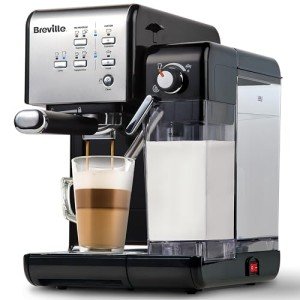20 Tools That Will Make You Better At Heat Exchange Espresso Machines

Heat Exchange Espresso Machines: A Comprehensive Guide
Espresso machines have actually progressed substantially throughout the years, catering to the needs of home baristas and coffee specialists alike. Among these machines, heat exchange espresso machines have actually gained appeal due to their capability to provide consistent performance and exceptional brew quality. In this short article, we will check out the workings, benefits, and important functions of heat exchange espresso machines, supplying an extensive understanding for both possible buyers and coffee enthusiasts.
Understanding Heat Exchange Technology
Heat exchange espresso machines run on a special concept that allows synchronised water heating for brewing and steaming. They are geared up with a single boiler that utilizes a heat exchanger system. This feature is significant as it makes it possible for users to brew espresso while steaming milk simultaneously, promoting performance in the coffee-making process.
How Does a Heat Exchange Espresso Machine Work?
The process begins with the machine's water inlet filling the boiler. As Online Espresso Machines Store warms up, it turns to steam. The innovative heat exchanger uses hot steam to heat extra water in a different passage developed particularly for the brew group. This indicates that water can reach the perfect brewing temperature level without awaiting the boiler to adjust. The crucial actions include:
- Water Fill: Water is drawn into the boiler.
- Heating Process: The boiler warms up as water is converted into steam.
- Heat Exchange: Steam heats up water in the heat exchanger tube.
- Brewing: Water from the heat exchanger is pressed through coffee grounds, extracting the tastes required for a rich espresso.
This procedure enables quick temperature changes and improved coffee extraction.
Advantages of Heat Exchange Espresso Machines
Heat exchange espresso machines offer several benefits, especially for those looking to optimize their coffee experience. Here are some essential advantages:
- Simultaneous Brewing and Steaming: Users can brew espresso while steaming milk, making it ideal for busy cafes and home baristas who value efficiency.
- Temperature level Stability: The boiler's steam pressure assists preserve a stable temperature level, which is crucial for constant espresso extraction.
- Flexibility: The design enables fast changing between developing and steaming, making it much easier to produce different coffee drinks, from lattes to coffees.
- Easy to use: Models often come with available controls, making it feasible for both newbies and knowledgeable baristas to produce quality drinks.
- Professional Quality: Heat exchange machines are often utilized in commercial settings, offering users with high-quality brewing performance at home.
Secret Features to Look for in Heat Exchange Espresso Machines
When thinking about the purchase of a heat exchange espresso machine, there are a number of functions that a person must consider:
- Build Quality: Look for machines made from long lasting materials, such as stainless steel or brass, guaranteeing durability.
- Boiler Size: A bigger boiler will hold more water and sustain higher output over time.
- PID Temperature Control: This feature helps maintain consistent brew temperature levels, which can boost the coffee-making process.
- Group Head Design: Machines with a saturated or semi-saturated group head offer better temperature stability.
- Ease of Use: User-friendly interfaces and intuitive controls enhance the general experience for baristas at all skill levels.
- Steam Wand Quality: An excellent steam wand with proper insulation and versatility enables much better texturing of milk.
- Water Reservoir Size: Depending on your requirements, think about how often you desire to refill the water tank.
Comparison of Popular Heat Exchange Espresso Machines
To better understand the choices offered in the market, listed below is a comparison table of some popular heat exchange espresso machines:
| Machine Model | Boiler Size | PID Control | Cost Range | User Ratings |
|---|---|---|---|---|
| Profitec Pro 700 | 2.0 L | Yes | ₤ 2,000-₤ 2,500 | 9.5/ 10 |
| Rocket Espresso R58 | 1.8 L | Yes | ₤ 2,400-₤ 2,800 | 9.4/ 10 |
| Elekta Bianca | 1.8 L | Yes | ₤ 2,500-₤ 3,000 | 9.6/ 10 |
| La Spaziale S1 Vivaldi II | 1.5 L | Yes | ₤ 1,800-₤ 2,200 | 9.2/ 10 |
| Bezzera Magica | 1.2 L | No | ₤ 1,600-₤ 1,800 | 9.0/ 10 |
FAQs About Heat Exchange Espresso Machines
What is the primary difference between a heat exchange and a dual boiler espresso machine?
While both types can brew espresso and steam milk at the very same time, dual boiler machines have different boilers for developing and steaming. In contrast, heat exchange machines make use of a single boiler and a heat exchanger to accomplish the same function.
Are heat exchange machines ideal for newbies?
Yes! Many heat exchange machines are created with easy to use features, making them available for newbies. With proper guidance and practice, users can quickly produce quality espresso.
What kind of upkeep do heat exchange espresso machines require?
Routine maintenance includes descaling, cleaning up the boiler, inspecting seals and gaskets, and keeping the group head tidy. Regular upkeep guarantees durability and consistent performance.
Can I use a heat exchange machine for different kinds of coffee drinks?
Absolutely! Heat exchange machines allow users to create a range of coffee drinks, including espresso, lattes, coffees, and more.
Heat exchange espresso machines represent a mix of innovation and custom, supplying coffee lovers with the tools needed for crafting the ideal cup. Their ability to simultaneously brew and steam, combined with exact temperature level control, makes them a compelling choice for both home baristas and professionals. With the ideal knowledge on functions and maintenance, users can unlock a world of charming coffee experiences, guaranteeing that each sip is as delightful as the last.

